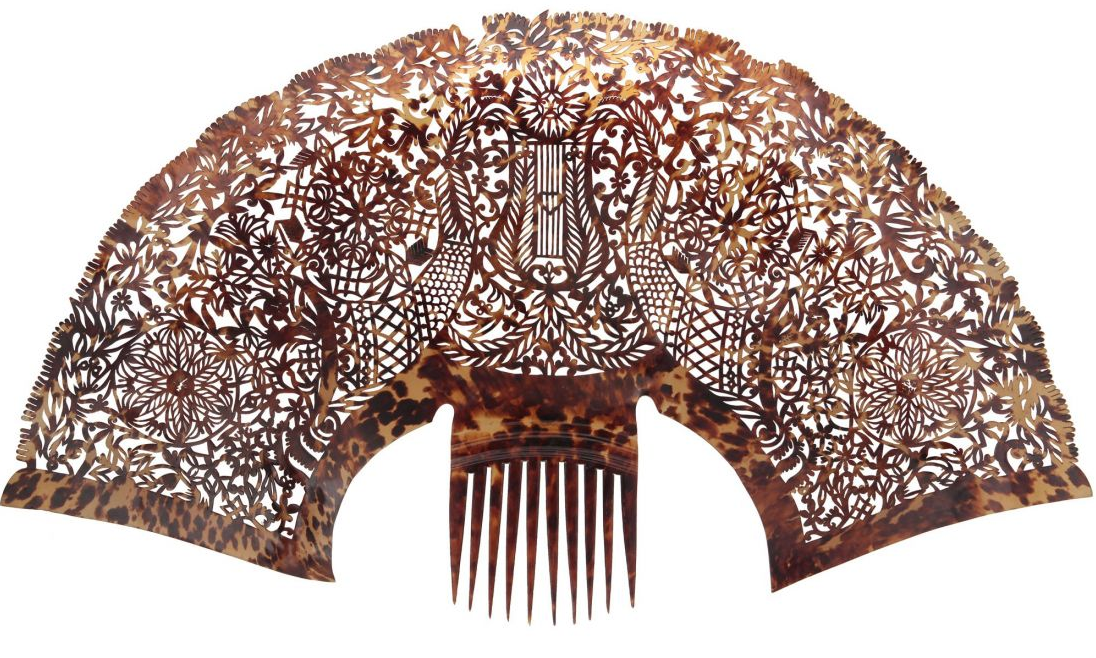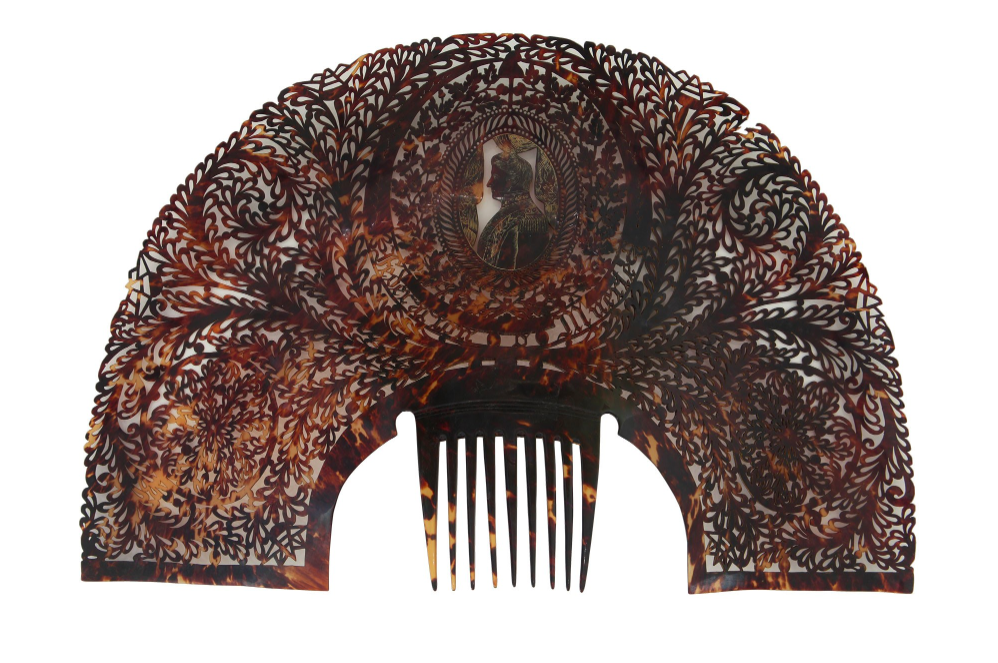Notes from the Field: Extravagant Female Fashions in Nineteenth-Century Argentina
This article is part of a series sharing the results from the inaugural FSJ Research Grant, which supports Master’s students, PhD candidates, early career researchers, and independent researchers working within the fields of fashion design and fashion studies.
The Fashion Studies Journal Research Grant supported my participation in the 2018 Interdisciplinary Nineteenth-Century Studies Association (INCS) supernumerary conference “Measure and Excess” held at Roma Tre University in Italy. The INCS convention is one of the most prestigious international meetings in the field of nineteenth-century literary and cultural studies. Professors and experts from across the globe present their works annually, spreading research and critical thinking in world literatures and cultures.
I had the honor of delivering an oral presentation, “Style and Satire: Extravagant Female Fashions in Nineteenth-Century Argentina,” which delves into the emergence and decline of the peinetón––a female Argentine headdress made of tortoiseshell that could measure up to one yard in length and width. Derived from the words peine (comb) and peineta (convex comb accessory worn in the hair), the term could be translated into English as ‘huge comb.’ The peinetón became extremely fashionable during the first period of Juan Manuel de Rosas’s regime between the 1820s and 1830s, immediately after the independence from Spain. This exuberant accessory, that for almost two decades crowned the female inhabitants of the Río de la Plata region and received great popularity, eventually became the source of concern and cultural debate in the press. It was increasingly employed as a national metonym to identify and polarize the differences between competing political and ideological camps at the time––Federalists (conservative party lead by Rosas) and Unitarists (liberal party).
In 1833, the year that Rosas was granted dictatorial power, combs were even engraved with a miniature portrait of Rosas with the proclamation “Federación o Muerte” (Confederation or Death) and “¡Viva la Confederación Argentina!” (Long Live the Argentine Confederation!).
This female accessory additionally became the object of satire in several lithographs, fashion plates, and leading periodicals of the period, generating intense debate on the role of fashion in women’s lives. This is prevalent in Trajes y costumbres de Buenos Aires (Dress and Customs of Buenos Aires) by the lithographer Hipólito César Bacle, who depicted numerous customs of the early nineteenth-century, including fashionable Argentine women wearing the peinetón. Under the title of Extravagancias de 1834 (Extravagances of 1834), Bacle criticized the use of the peinetón, portraying it as a destabilizing force in the cityscape. Titles under each lithograph in the series allowed for a playfully burlesque notion of the accessory and referred to its negative consequences for men in the streets of Buenos Aires. For example, the first lithograph, “Peinetones en casa” (“Peinetones at Home”), depicts a fancy woman seeking to leave the house, but her immense comb prevents her from exiting. A man is forced to destroy the house entrance in order to let the woman literally enter the public sphere. “Still more, lady?” The laborer desperately asks her. At the same time, half of the peinetón of another woman who is walking down the street is about to fall on the man’s head without him noticing. As Bacle’s lithographs evidence, the peinetón emphasized a unique and patriotic character, while at the same time raising important questions about the complex gender dynamics around urban space and the growing access of women in the city during the advent of modernity. In my presentation, I connected satire in the print media and in graphic material (fashion plates, lithographs, and illustrations) through the peinetón––two genres which have been little studied together to date. This ultimately introduced a new and interdisciplinary perspective in nineteenth-century Hispanic literary and cultural studies.
As I pointed out in my paper, within the nation-building process, women of postcolonial Argentina wore the peinetón fashionably to assert their presence in the public and political spheres, gaining unprecedented social visibility. The high price of the peinetón became progressively linked to female prostitution, which helps to explain the quick demise of the peinetón from the streets of Buenos Aires and its final disappearance in 1837. The rise and decline of this accessory is intimately linked to the reconfiguration of gender roles through fashion in the postcolonial context, a unique historical moment when certain items of adornment became invested with an influential ideological message. The peinetón thus marks a fascinating relationship between fashion, politics, and gender––a theme that needs further exploration.
My presentation stemmed from the second chapter of my dissertation, “Accessories and Political Revolution,” which covered Spanish mantillas and Argentine peinetones, both of which were employed to identify and polarize the ideological gap between political groups in Spain and the Río de la Plata. My doctoral project, Women’s Fashion Accessories: Gender, Modernity, and National Identity in Nineteenth-Century Iberian and Latin American Cultures, examined the written and visual representation of accessories in a variety of Hispanic cultural productions. I analyzed periodicals, novels, and visual arts to illustrate how fashion accessories produced a symbolic arena in which cultural meanings and values were transformed and reshaped in a transnational setting. As I demonstrated, women’s accessories reveal entire networks of negotiations and strategies that often involved issues of gender, race, class, and national identity, all of which concerned Spain and post-colonial Latin America during the advent of modernity.
My doctoral project focused on three essential pillars: nationalism and the birth of Spanish-American nation-states, the dissemination of journalistic and literary culture, and the emergence of a fashion industry linked to consumption and economic growth. Of principal importance, middle-class women became active participants in the economy and expressed themselves through the consumption of certain fashionable items. I analyzed these phenomena in Spain and Latin America, as well as their complex entry into modernity, by tracing the transnational circulation of accessories. Drawing from critical theory, gender, and visual and material culture studies, my research project expanded recent debates in fashion, particularly those concerning clothing’s role in the construction of modernity and the reconfiguration of gender, race, and social roles. Moreover, I introduced original examples of transnational fashion cultures and interconnected sartorial items from geographically disparate areas, while bringing to light lesser-known fashion networks.
Presenting at Roma Tre University was essential for my career for a number of reasons. I had the opportunity to share part of my doctoral project and the feedback I received from the audience accelerated my ability to revise my final draft. Participating in the convention was also a great opportunity to expand my professional network, meet scholars in related fields, and open the path to future research and academic collaboration.
Currently, I am working on turning my dissertation draft into a monograph which I hope, will shed light on the cultural significance of female items of clothing and their intimate relation to gender and political dynamics, furthering critical thinking in fashion studies as a whole. I am extremely grateful for this amazing opportunity that would not have been possible without the support of The Fashion Studies Journal. I also would like to thank the INCS for selecting me as one of the recipients of the Chris Vanden Bossche Graduate Student Travel Award, which covered the rest of my travel expenses to Italy.





